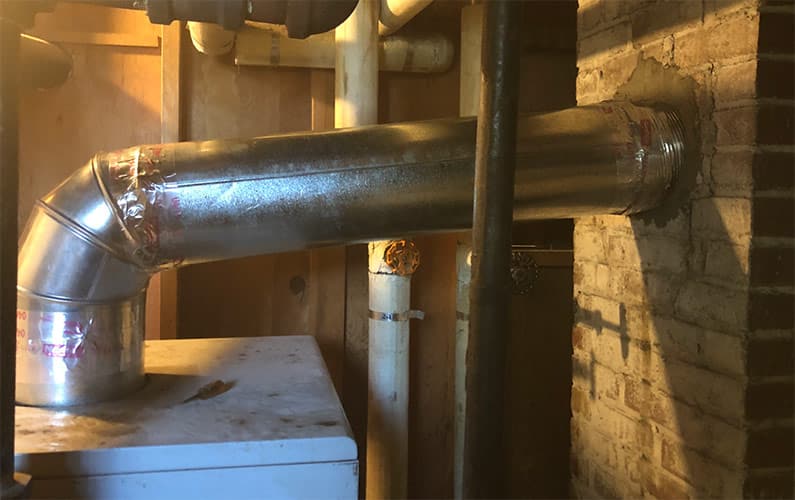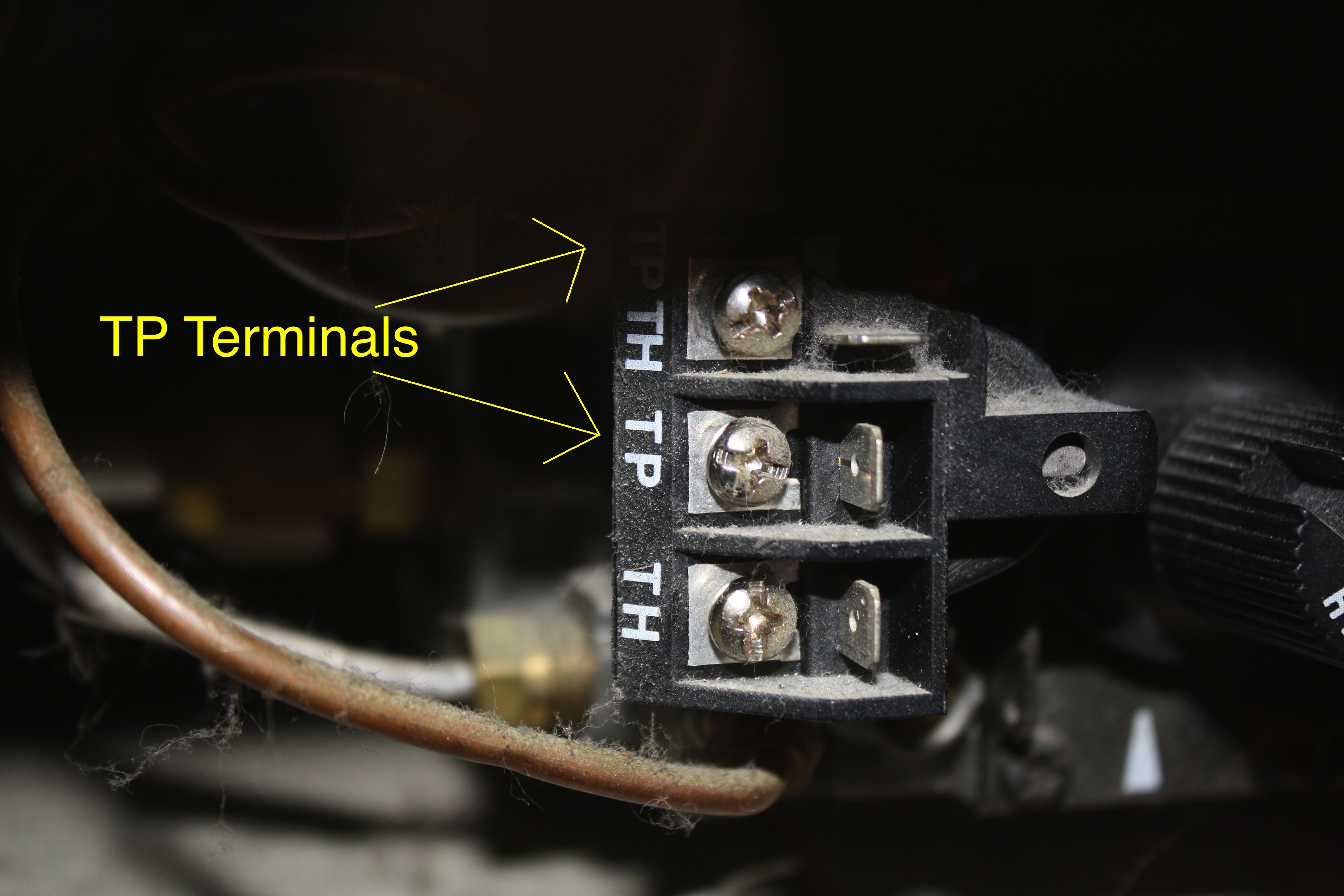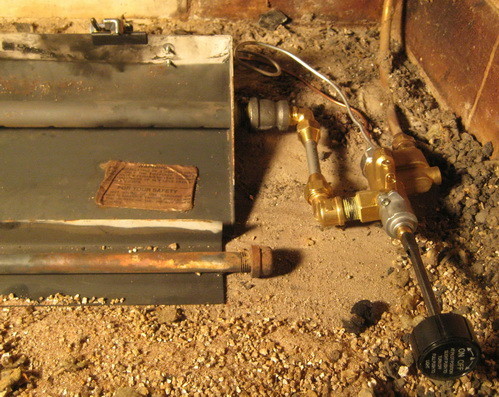Repairing Gas Fireplace Leak
Gas fireplaces offer a convenient and efficient way to enjoy the warmth and ambiance of a fire without the hassle of burning wood. However, like any appliance, gas fireplaces can develop issues over time, one of the most serious being gas leaks. Addressing a gas fireplace leak promptly and correctly is crucial for the safety of your home and family. This guide will walk you through the signs of a gas leak, steps for identifying and fixing the leak, preventive measures, and when to call a professional.

Recognizing the Signs of a Gas Leak
Understanding the warning signs of a gas leak is the first step in ensuring the safety of your home. Gas leaks are dangerous because natural gas is highly flammable and can cause explosions or fires if not addressed promptly.
Odor Detection
One of the most common and noticeable signs of a gas leak is the smell of rotten eggs. Natural gas is odorless, but utilities add a chemical called mercaptan to give it a distinctive, unpleasant odor, making it easier to detect leaks. If you smell this odor near your gas fireplace, it’s crucial to take immediate action.
Unusual Sounds
Another indicator of a gas leak is the sound of hissing or whistling near the gas line or fireplace. This sound occurs when gas escapes through a small hole or crack in the line. If you hear such noises, it’s important to turn off the gas supply and ventilate the area.

Physical Symptoms
Exposure to a gas leak can cause various physical symptoms, including headaches, dizziness, nausea, and difficulty breathing. If you or anyone in your household experiences these symptoms, evacuate the area immediately and seek fresh air.
Visual Indicators
In some cases, you might notice visual signs of a gas leak. These can include dead or dying plants near the gas line, a white cloud or mist near the fireplace, or bubbles in standing water around the gas line. These signs indicate a potential gas leak and require immediate attention.

Steps for Identifying and Fixing a Gas Leak
Once you suspect a gas leak, it’s essential to take swift and appropriate action to identify and repair the leak. Here are the steps to follow:
Safety Precautions
Before attempting to locate or fix a gas leak, ensure your safety and the safety of others in your home. Turn off the gas supply at the main shutoff valve, avoid using any electrical devices, and ventilate the area by opening windows and doors. If the leak is significant or you feel unsure, evacuate the home and call emergency services.
Locating the Leak
To locate the gas leak, you can use a soapy water solution. Mix water with a small amount of dish soap and apply it to the gas line, connections, and fittings using a spray bottle or sponge. If there is a leak, you will see bubbles forming at the site of the leak. Mark the location of the leak for repair.

Repairing the Leak
The method of repairing a gas leak depends on the location and severity of the leak. For minor leaks at connections or fittings, you can often tighten the connections with a wrench. If the leak is due to a damaged section of the gas line, you may need to replace the damaged section. Always use materials and fittings that are rated for gas use.
Testing for Leaks
After making the necessary repairs, it’s crucial to test for leaks again to ensure the problem is resolved. Reapply the soapy water solution to the repaired area and check for bubbles. If no bubbles form, the leak is likely fixed. Turn the gas supply back on and monitor the area for any signs of leakage.

You May Want to Check These Articles:
- Valor Gas Fireplace Remote Control
- Fireplace Gas Valve Flange Extension
- Fireplace Gas Valve Key Extension
- Gas Fireplace Knob
- Fireplace Gas Valve Extension

Preventive Measures to Avoid Gas Leaks
Preventing gas leaks is always better than dealing with them after they occur. Implementing preventive measures can help maintain the safety and efficiency of your gas fireplace.
Regular Inspections
Conduct regular inspections of your gas fireplace and gas lines to identify any potential issues before they become serious problems. Look for signs of wear, corrosion, or damage and address them promptly. Consider scheduling annual professional inspections for a thorough assessment.
Proper Installation
Ensure that your gas fireplace is installed correctly by a certified professional. Improper installation can lead to leaks and other safety hazards. Follow the manufacturer’s guidelines and local building codes for installation and maintenance.

Quality Materials
Use high-quality materials and fittings for your gas fireplace and gas lines. Investing in durable and reliable components can prevent leaks and reduce the need for frequent repairs. Avoid using low-grade materials that may deteriorate quickly.
Leak Detection Devices
Consider installing gas leak detectors in your home, particularly near the gas fireplace and gas lines. These devices can detect the presence of natural gas and alert you to potential leaks, allowing you to take immediate action.

When to Call a Professional
While some gas fireplace leaks can be fixed with DIY methods, certain situations require the expertise of a professional. Knowing when to call a professional can ensure the safety and proper functioning of your gas fireplace.
Complex Repairs
If the leak is located in a complex part of the gas line or fireplace, or if you’re unsure about the repair process, it’s best to call a professional. Attempting complex repairs without the proper knowledge and tools can be dangerous.
Repeated Leaks
If you’ve repaired a gas leak but notice that leaks continue to occur, there may be an underlying issue that requires professional attention. Repeated leaks can indicate a problem with the installation or the quality of the gas line.
Safety Concerns
If you feel unsafe or uncertain at any point during the inspection or repair process, don’t hesitate to call a professional. Your safety and the safety of your household are paramount, and professionals have the training and equipment to handle gas leaks safely.
Regulatory Requirements
In some areas, regulations require that gas line repairs be performed by licensed professionals. Check your local building codes and regulations to ensure compliance and avoid potential fines or legal issues.

Common Mistakes to Avoid
Avoiding common mistakes can help ensure a safe and effective gas leak repair process. Here are some pitfalls to watch out for:
Ignoring the Signs
One of the most critical mistakes is ignoring the signs of a gas leak. Delaying action can lead to severe consequences, including health hazards and potential explosions. Always take gas leak signs seriously and address them promptly.
Using Inappropriate Materials
Using materials and fittings not rated for gas use can lead to leaks and other safety issues. Always use approved materials for gas line repairs and installations to ensure safety and compliance with regulations.
Inadequate Testing
Failing to test for leaks after making repairs can result in undetected leaks and continued safety risks. Always test the repaired area thoroughly using a soapy water solution or a gas leak detector to confirm that the leak has been fixed.
Overlooking Professional Help
Attempting to repair complex leaks without professional help can be dangerous. Recognize when a situation requires a professional’s expertise and don’t hesitate to call for assistance to ensure a safe and effective repair.
Skipping Regular Maintenance
Neglecting regular maintenance can lead to undetected issues and increased risk of gas leaks. Schedule routine inspections and maintenance to keep your gas fireplace and gas lines in good condition.

What should I do if I suspect a gas leak in my fireplace?
If you suspect a gas leak, immediately turn off the gas supply at the main shutoff valve, ventilate the area by opening windows and doors, and avoid using any electrical devices. Evacuate the home if necessary and call emergency services or a professional to inspect and repair the leak.
How can I detect a gas leak in my fireplace?
You can detect a gas leak by using your senses and some simple tools. Look for visual signs such as dead plants or bubbles in water, listen for hissing sounds, and smell for the odor of rotten eggs. Additionally, you can use a soapy water solution to check for bubbles at suspected leak points.
Is it safe to repair a gas leak myself?
While minor leaks, such as those at connections or fittings, can often be repaired by tightening with a wrench, more complex leaks should be handled by a professional. If you’re unsure about the repair process or the leak is in a complex part of the gas line, it’s best to call a professional to ensure safety.
How often should I have my gas fireplace inspected?
It’s recommended to have your gas fireplace inspected annually by a certified professional. Regular inspections can identify potential issues early and ensure the safe and efficient operation of your fireplace. Additionally, conduct your visual inspections periodically to spot any obvious signs of wear or damage.
What are the long-term risks of not addressing a gas leak?
Failing to address a gas leak can have severe long-term risks, including health hazards from prolonged exposure to natural gas, increased risk of fires or explosions, and potential damage to your property. It’s crucial to address gas leaks promptly to ensure the safety of your home and family.
By understanding the signs of a gas leak, the steps to repair it, preventive measures, and when to seek professional help, you can ensure the safe and efficient operation of your gas fireplace. Avoiding common mistakes and following best practices will help maintain a safe and comfortable living environment.
Related Posts: